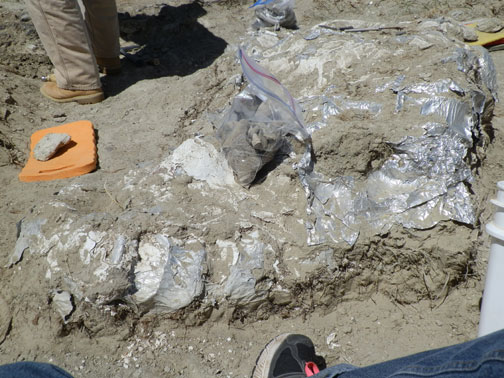
In the field, you find a bone and then "pedestal" it. That is, you dig around it which makes it seem like it is up on a pedestal. It is important that you be able to tell bone from dirt. In Jurassic rock, this is a bit easier because the bones are a brownish-black color and the soil is an almost white matrix. As you work, you apply a base of either moist paper towel or tinfoil and then a layer of plaster and burlap. This casing is called a "jacket". Once the bone is fully pedestalled and jacketed, it is "flipped" onto the jacket top. More plaster and burlap is applied and very big things are chain-hoisted onto a trailer for the journey to the Tate Geological Museum in Casper, WY.
